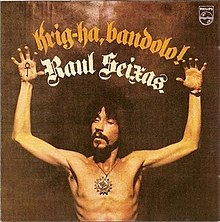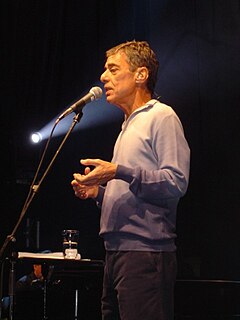
Música popular brasileira or MPB is a trend in post-bossa nova urban popular music in Brazil that revisits typical Brazilian styles such as samba, samba-canção and baião and other Brazilian regional music, combining them with foreign influences, such as jazz and rock.

Raul Santos Seixas was a Brazilian rock composer, singer, songwriter and producer. He is sometimes called the "Father of Brazilian Rock" and "Maluco Beleza", the last one roughly translated as "Groovy Nutcase". He was born in Salvador (Bahia), Brazil, and died of pancreatitis in São Paulo. Every year on Seixas' birthday, legions of fans, including thousands of impersonators, throw a parade in his honor in downtown São Paulo.
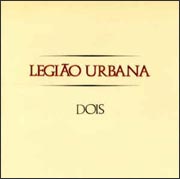
Dois is the second studio album by Brazilian rock band Legião Urbana. It was released in July 1986.
Kreegah bundolo is a phrase that Tarzan—and the tribe of apes that raised him—cry out to warn of danger, for example, "Kreegah bundolo! White men come with hunt sticks. Kill!" According to the fictional ape language worked out by Tarzan creator Edgar Rice Burroughs, the literal translation of the phrase would be "Beware, (I) kill!"
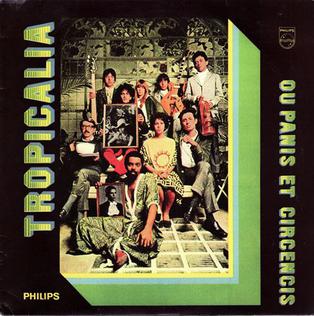
Tropicália ou Panis et Circencis is a 1968 collaboration album by artists including Gilberto Gil, Caetano Veloso, Tom Zé, Os Mutantes and Gal Costa. Considered an important record in the history of Brazilian music, it features arrangements by Rogerio Duprat and lyrical contributions from Torquato Neto.
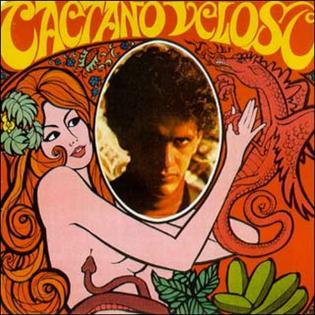
Caetano Veloso is the debut solo album by the artist of the same name, released in Brazil in 1968. He had released Domingo the year before in collaboration with Gal Costa. It was one of the first Tropicália efforts, and features arrangements by Júlio Medaglia, Damiano Cozzella, and Sandino Hohagen, as well as an eclectic assortment of influences, demonstrating the "antropofagia" of the Tropicália movement. Sounds from psychedelia, rock, pop, Indian music, bossa nova, Bahian music and other genres appear on the album. It includes the hit songs "Alegria, Alegria", "Tropicália", and "Soy loco por ti, América".

"Asa Branca" is a song written by Luiz Gonzaga and Humberto Teixeira in 1947. The asa-branca of the title is the picazuro pigeon. With its departure the desolation of the parched sertão is complete, and the protagonist of the song, unable to make a living, must leave the sertão and his lady-love Rosinha. The song closes with his promise to return.

Zé Ramalho Canta Raul Seixas is the sixteenth album by Brazilian solo artist Zé Ramalho. It is a tribute album to another well-known Brazilian guitarist, Raul Seixas. It was released in 2001. Zé wanted to record an album with Raul when he was alive. More than a decade after his death, he decided to record this tribute album, but he faced opposition from the writer Paulo Coelho, who refused to grant permission for Zé Ramalho to record the songs he had composed with Raul. Zé ended up recording only songs Raul had composed alone. Zé later stated, referring to Coelho's refusal: "It was rude, with absolutely no elegance. But there's no way for someone to stop me."

Construção is an acclaimed studio album recorded by the Brazilian musician Chico Buarque in 1971.
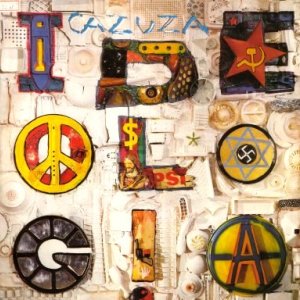
Ideologia is a 1988 album recorded by Cazuza, the third in his solo career. It won the Prêmio Sharp for best album in 1988 and sold more than 2 million copies. Many of Cazuza's hits are from this album, such as "Ideologia", "Brasil" and "Faz Parte do Meu Show".

Acabou Chorare is the second album by the Brazilian musical group Novos Baianos. The album was released in 1972 by Som Livre, following the group's somewhat successful debut É Ferro na Boneca (1970). The group adopted the expressive guitar of Jimi Hendrix and the "brasilidade" of Assis Valente, and was heavily influenced by João Gilberto, who served as the group's mentor during the album's recording.

Da Lama ao Caos is the debut album of the Brazilian band Chico Science & Nação Zumbi. Released in 1994, the album presents a fusion of funk rock and maracatu and contributed for spreading the music of Pernambuco around the world. Da Lama ao Caos is considered the manifestom of the Manguebeat movement.

Verde, anil, amarelo, cor de rosa e carvão is Brazilian singer Marisa Monte's third album, released in 1994. Contributors include well-known artists such as Gilberto Gil, Paulinho da Viola, Naná Vasconcelos, Carlinhos Brown and the group Época de Ouro. The album includes the hits "Maria de verdade," "Na estrada," and "De mais ninguém."

Gita is the second solo studio album by the Brazilian musician Raul Seixas. It was released in 1974, shortly after he returned to Brazil. Gita is one of Seixas' more critically acclaimed albums, selling more than 600,000 copies and receiving a Gold Certification from ABPD.

Os 24 Maiores Sucessos da Era do Rock!(The Age of Rock's 24 Greatest Hits) is an album of late 1950s and early 1960s era rock and roll and Jovem Guarda songs covered by the Brazilian singer and guitarist Raul Seixas. The album's 1975 pressing was retitled 20 Anos de Rock.

Novo Aeon is the third solo studio album by the Brazilian musician Raul Seixas. Released in 1975, most of the album was heavily influenced by the work of Aleister Crowley and other occultists, with the major example being the title track. Not as successful as Seixas' previous album, Gita, it was a sales failure. However, it contains some of his most famous songs, such as "Tente Outra Vez", "Rock do Diabo" and "A Maçã".
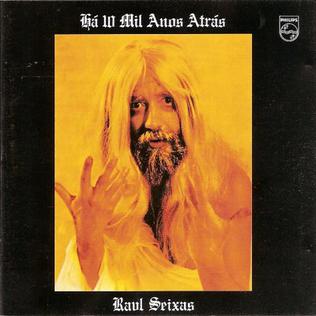
Há 10 Mil Anos Atrás is the fourth studio solo album by the Brazilian singer Raul Seixas. It was released in 1976.

Pedro Paulo Soares Pereira, better known by the artistic name Mano Brown, is a Brazilian rapper, music producer and founding member of the hip hop group Racionais MC's, along with Ice Blue, Edi Rock and KL Jay.
"Ouro de Tolo" is a song by the Brazilian singer and composer Raul Seixas from his first solo album, Krig-ha, Bandolo! (1973). In 2009, it was chosen by Rolling Stone Brasil as the 16th best Brazilian song.
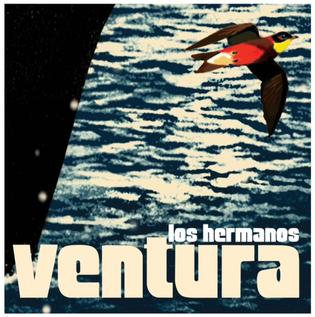
Ventura is the third album by Brazilian band Los Hermanos, released in 2003. It was the first work of a Brazilian band to be made available - illegally - on the Internet before its official release.
